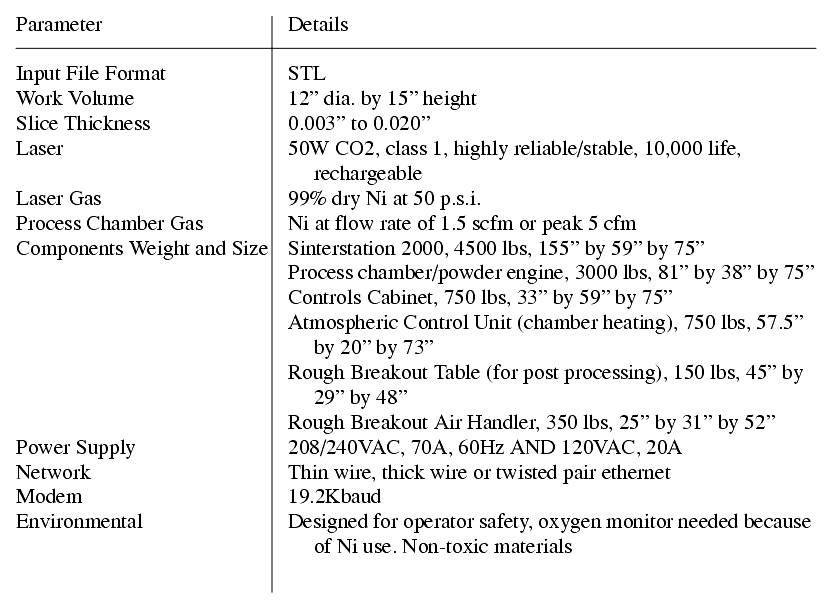
|
|
|
66.4 SELECTIVE LASER SINTERING (SLS)
������������Powdered material is fused together in layers using a laser
The powders need fine grains and thermo-plastic properties so that it becomes viscous, flows, then solidifies quickly.
invented in 1986 by Carl Deckard
marketed by DTM corp. (Sinterstation 2000)
The process uses a heated chamber (near the powder melting temperature)
The product is split into slices from the .STL file and created one layer at a time by spreading layers of powder, sintering the powder with a CO2 laser, then adding new layers of powder and sintering until done.
When done the part is inside a cake of powder, and putty knives and spatulas are used to remove the loose powder

Supports not needed as the unsintered powder supports overhangs/etc.
slow cooling of the parts can prevent distortion due to internal stresses.
The laser is about 50W infrared (about 10000nm) This power level is much higher than stereolithography
Optics and x-y scanner are similar to SL
the process chamber runs hot to decrease the power required from the laser, and reduce thermal shrinkage that would be caused by a difference in operation and cooling temperatures.
The hot chamber is filled with nitrogen (98% approx.) to reduce oxidation of the powder.
rate of production is about 0.5-1" per hour
DTM markets the Sinterstation 2000 for $250,000(US) to $497,000(US) depending upon the selection of 1, 2, or 3 materials (investment casting wax, nylon, or polycarbonate). The Sinterstation 2500 starts at $400,000
Selected specifications for a Sinterstation 2000 are given below,

Search for More: |

Custom Search
|

|